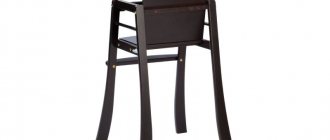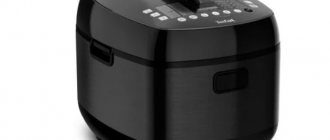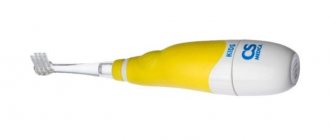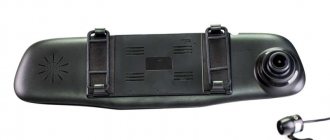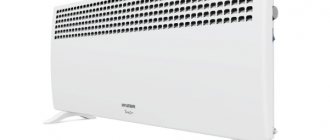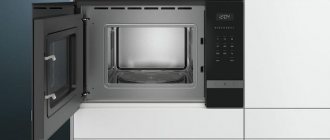A decade and a half ago, the personal computer transformed from an ordinary workstation into a full-fledged device designed for working with multimedia files. In addition to visiting websites and chatting on social networks, this equipment can be used to watch videos, listen to music, process audio, play games, and so on.
To fully output the signal to headphones or speakers, the computer must be equipped with a sound card. Many aspiring musicians use a computer to record their tracks. Special sound cards are designed for this, the parameters of which significantly exceed the user ones. Unfortunately, not all people know which sound card is suitable for recording voices or music of a certain genre. Today we decided to fill this gap by ranking the best sound cards for the home studio of 2019.
Before we begin directly analyzing the useful characteristics of specific models, let's figure out what you should pay attention to when purchasing this equipment, especially since there is a very wide selection of similar devices on the shelves of computer hardware stores. This is where we will begin our review.
Rating TOP 7 best external sound cards
There are already a huge number of similar devices, making the right choice is difficult, it will take you a lot of time and effort, so we decided to make your efforts easier. After processing a lot of information, we have compiled a list of the most popular external sound cards. This list included:
- ASUS Xonar U7.
- Creative X-Fi HD.
- ESI UGM96.
- Focusrite Scarlett 2i2 2nd Gen USB.
- Steinberg UR22.
- Creative Sound Blaster X7.
- Native Instruments Traktor Audio 6.
Now let's move on to a more detailed consideration of each of the above models.
ASUS Xonar U7
A good external sound card is connected via a USB connector, from which it is powered, so you do not need additional sockets and power supplies. The device supports home theater technology and is capable of reproducing clear, surround quality sound in 7.1 format, making watching movies even more enjoyable. The kit includes a software disc, a mini Toslink adapter, documentation and a USB cable. Equipped with headphone and microphone inputs.
| Dimensions | 130x80x25 mm |
| Number of audio recording channels | 2 |
| DAC frequency during recording/playback | 192/192 kHz |
| DAC capacity (recording/playback) | 24/24 bit |
| Signal-to-noise ratio during recording/playback. | 114/120 dB |
| Number of recording channels | 8 |
| Sound card format | 7.1 |
Price: 6500 rubles.
external sound card ASUS Xonar U7
pros
- Dolby Home Theater v4 technology (home cinema);
- inputs for headphones and microphone;
- compact dimensions (130x80x25 mm);
- USB powered.
Minuses
- no remote control.
Very good card, well made. The case is strong, the buttons do not loosen. The button for switching between headphones and speakers on the volume knob is very conveniently made, so the plugs do not need to be constantly pulled out. The sound, compared to the built-in audio system, is simply wonderful! It works for six months, so far I’m happy with everything.
Creative X-Fi HD
Like the previous device, it receives power and is connected using a USB cable. It will delight the user with much higher quality sound than the built-in PC system, and it also adds the ability to record sound and convert it. The device is equipped with SBX Pro Studio sound technology, headphone amplification and a phono stage, which will allow you to digitize sound from vinyl records.
| Bit depth | 24 bit |
| Card format | 2,0 |
| Playback channels | 2 |
| Frequency (rec/play) | 96 kHz |
| Signal to noise ratio (rec/playback) | 100/114 dB |
Price range: 5000 – 7000 rubles.
Creative X-Fi HD external sound card
pros
- complete set (cable 2RCA – jack 3.5 mm, USB cable, instructions, CD with software);
- microphone and headphone jacks on the front panel;
- USB powered;
- the ability to convert and digitize sound.
Minuses
- no remote control.
I just bought it today and am impressed. The software was installed easily, I connected the headphones and decided to play (that's why I bought it). The sounds have changed a lot, they have become cleaner and every rustle is now audible, everything sounds somehow new. I’m very pleased with the purchase, I have something to show off to my friends!
ESI UGM96
The device will be attractive to musicians, the card supports several playback standards, is compact in size and easily fits in a pocket, no power cable is required, it works from a USB connection. Equipped with connectors for connecting two headphones, in addition, it is possible to connect two guitars or a guitar and a microphone (one audio input is only for guitar, and the second is universal).
| Playback channels | 2 |
| Recording channels | 2 |
| Bit depth (record/replay) | 24 bit |
| Frequency (rec/playback) | 96 kHz |
| Dynamic range (rec/playback) | 105/103 dB |
| Dimensions | 70x60x20 mm |
TOP products
Let's look at the best sound cards in their segment.
Best sound card for recording audio instruments
Steinberg UR22
External card Steinberg UR22 with USB 2.0 connection. Among the interesting features of the device are a metal case, good support for operating modes reaching 24bit 192kHz, combined XLR/TRS connectors, and the presence of MIDI input/output. In fact, these are professional capabilities at a low price. The cost of the card is about 14 thousand rubles.
Price: RUB 13,990
Best for recording and home studio
BEHRINGER U-PHORIA UMC204
The external card BEHRINGER U-PHORIA UMC204 with a USB 2.0 interface has 4 analog audio outputs. The card allows you to get very good sound when recording in a home studio. Allows you to connect 2 microphones or 2 guitars, for example. A simple, reliable and functional semi-professional card at a price of 7 thousand rubles opens up new vistas in terms of sound quality.
Price: ₽ 7,000
Best External USB Sound Card
Creative X Fi Go! Pro
External card Creative X Fi Go! Pro with USB 1.1 interface is suitable for laptops without a PCI-e x1 slot. Thanks to the card, you can get beautiful, clear sound without hiss and other interference with excellent detail. For just 2,500 rubles, you can open up new sound horizons on your laptop.
Price: ₽ 2,590
Best Budget Cards
Lexicon Alpha
The Lexicon Alpha card with a USB 1.1 interface at a price of 3 and a half thousand rubles provides clear, powerful sound without noise, even at minimal latency. In terms of sound quality, depth and liveliness of sound, it surpasses many cards in this segment. An excellent budget option for recording voices and instruments.
Price: ₽ 3,700
PreSonus AudioBox IOne
PreSonus AudioBox IOne, priced at 9,000 rubles, is a true revolutionary in the field of sound. Lightweight, compact card works with iPad. A great option for a home studio.
Price: ₽ 9,000
The best expensive cards
Apogee Duet 2
Apogee Duet 2 is a professional, convenient computer DAC designed to work with professional equipment. Compatible with Apple OS. Impresses with smooth, detailed, powerful, dynamic, natural sound. The user receives live studio sound. Has 4 channels of DAC so the speaker and headphone outputs can play different things at different levels.
Price: ₽ 53,000
MOTU 4pre
MOTU 4pre, priced at 46,000 rubles, is a professional sound card that allows you to work via both USB and FireWire interfaces. Ideal for recording and mixing thanks to a large number of different inputs and outputs. You can simultaneously connect several headphones, monitors, instruments, and a microphone. Everything can work as a mixer without a PC.
Price: ₽ 45,900
Focusrite Scarlett Solo
Focusrite specializes more in professional audio equipment, but its range also includes a relatively affordable external sound card starting at 6,500 rubles. Given the ability to record from musical instruments, including electric guitars, as well as an excellent 24-bit and 96 kHz audio DAC with ASIO support, this device looks quite tempting.
Users praise not only the sound recording capabilities, but also high-quality loud playback through acoustics or headphones. The device connects to the laptop via USB and has the following inputs/outputs: a pair of analog channels, Hi-Z, XLR and 6.3 mm audio, phantom power for microphones is supported. The small size of the device allows you to take it with you and record your music anywhere.
Which sound card is better, external or internal?
In a semi-professional environment, there is an opinion that “everything external is better than internal.” This is somewhat exaggerated, but it conveys the general mood. The logic here is quite obvious: a separate external device is more stable, is not subject to electrical failures in the computer itself, has more capabilities (plainly more space on the case) for connecting other devices, control means can be physical rather than software, and so on. Plus, there is an established opinion that external devices a priori have more reliable and high-quality hardware installed.
An indisputable point in the properties of external video cards is that they load the central processor and other key modules of the computer significantly less than internal discrete or integrated ones. In addition, it just so happens that an external sound card is a kind of claim to professionalism.
Today’s rating from Expertology is dedicated to just such devices – external sound cards. Based on the first few models, it will become clear that the internal card cannot simply physically have such a range of capabilities.
How to choose a sound card?
The key task of this element of a personal computer is to convert a digital signal into an analog signal and then transmit it to headphones or speakers. Almost all motherboards have an integrated sound card, but its power may not be enough for full-fledged sound recording. In addition, the integrated device will negatively affect the overall performance of the personal computer.
More and more users are inclined to purchase an external sound card that will connect to a computer or laptop using a special high-speed interface called FireWire. Due to this solution, it is possible to significantly reduce interference, which has a positive effect on sound quality.
Currently, there are two similar standards - IEEE 1394, which provides a throughput of 400 Mbit per second, and IEEE 1394b - which has a data transfer rate of about 800 Mbit. There are also external sound cards that can be connected to a computer via a traditional USB connector. Such products usually have an output for speakers or headphones, as well as the ability to connect one or more microphones. Unfortunately, their maximum throughput does not exceed 480 Mbit per second - this may not be enough for professional sound recording.
You can also find more powerful studio sound cards on sale. Their main distinguishing feature is the presence of a large number of different outputs that can be used to connect a wide variety of musical instruments: electric, acoustic and bass guitars, microphones, synthesizers, and so on. In addition, such devices are capable of high-quality recording of sound from a drum kit. One of the distinctive features of such products is that there is no need to install drivers, but you will still have to install the software. It will be very useful when working with equalizer and other settings.
When choosing models to include in our rating of the best sound cards for studio recording, we were guided by all these parameters, but also took into account user reviews, including professional sound engineers and musicians, and also took into account the price-quality ratio. We tried to include not too expensive models in the rating so that each of our readers can afford to purchase this equipment. Now is the time to analyze the useful characteristics of such products.
Ten models of studio sound cards
Lexicon Alpha
By and large, this device is not a sound card, but a full-fledged studio designed for sound recording and dubbing of films. The model has multifunctional software. A USB mixer and a special Lexicon Pantheon reverb plug-in are provided. There is also one XLR microphone input, TRS and RCA inputs and outputs. On the front panel, the user will find a quarter-inch universal instrument input, allowing direct recording to personal computers. In addition, there is a headphone output. In general, the operating parameters are quite modest, but the price of the device is also quite reasonable, so the model is excellent for use at home.
The design has a reliable body made of silver and blue plastic with a matte coating, which gives the product additional style. The handles are also plastic, corrugated, they rotate quite smoothly and moderately tightly, which allows you to set the most accurate parameters. The sound card comes with a fairly long USB cable; you still have to install drivers, otherwise the computer may not see such an external device. In addition, this process has a positive effect on the overall performance of the equipment.
More: Top 10 best drills for winter fishing: how to choose the right ice drill
Advantages:
- For work in a home studio, it provides fairly decent sound quality;
- All adjustments are mechanical, which allows you to adapt to the specific acoustic characteristics of the room and change parameters directly during the recording process;
- There are all the necessary connectors for connecting microphones and musical instruments;
- You can record your voice simultaneously with music.
Flaws:
- When working with a microphone connected via the XLR connector, recording is carried out only in mono mode.
Lexicon Alpha
9. Focusrite Scarlett Solo
A fairly easy-to-use and very compact device that provides high quality sound recording even at home. You can work with it on various platforms - MacOS and Windows. If necessary, the sound card can operate completely offline, that is, without connecting to a personal computer. You can take this model with you everywhere: just connect it through a special connector to the mains, connect it to a microphone and guitar, and then start recording. The interfaces are optimal for working with any musical equipment. If necessary, the instrumental part and vocals can be recorded simultaneously. In addition, there is a function for activating effects - adding amplifiers to the guitar channel, as well as adding reverb to vocals.
The audio output delay is minimal. The user can download special software for the product, thanks to which the customization options will be greatly expanded. There are various overdrives, plug-ins, amplifiers and other add-ons. Initially, this model was developed exclusively for guitarists, but musicians who play keyboards or drums will also be able to appreciate the capabilities of such a sound card.
Advantages:
- Minimum time delay of the output signal;
- Excellent sound quality;
- All physical controls are carefully thought out;
- When various effects are activated, special LEDs will light up.
Flaws:
- The software does not always work correctly;
- The sound through the headphones is somewhat flat.
Focusrite Scarlett Solo
Zoom UAC-2
It has a fairly high operating speed, this sound card is capable of using two channels at once, and the interface was originally created for optimal use on MacOS and Windows platforms. With the help of this product it will be possible to take the quality of recorded sound to a fundamentally new level. Connects to USB 2.0 or USB 3.0 connectors and can work with various mobile devices. During product development, the most modern SuperSpeed technology was used, with which it was possible to achieve minimal output signal delay. In addition, there is a whole set of advanced features, in particular, quadruple upsampling. You can connect absolutely any musical instrument, microphone or other linear signal source to the sound card.
The card is suitable for playing music from the stage, it can be used as a full-fledged digital workstation aimed solely at listening. The interface is suitable for online media presentations, game broadcasts, and so on. The sound card can work with any microphone, from the simplest to the professional. The housing has a connector for direct connection to a household electrical outlet.
Advantages:
- Quite austere appearance;
- Build quality implies solidity of the body;
- Very convenient to use;
- The interface functions reliably regardless of the platform used;
- All inputs and parameter adjustment knobs are located on the front panel of the product;
- Drivers are reliable and updated quite rarely;
- You can work without connecting to a personal computer.
Flaws:
- When you turn off the computer it still continues to work.
Zoom UAC-2
Steinberg UR44
Despite the fact that this product was developed and released about five years ago, today there are not too many models of studio sound cards that could surpass it in terms of performance parameters. There are four inputs for connecting microphones, so you can record several vocal tracks. The body is made entirely of metal, but this does not in any way affect the quality of the recorded music - nothing is shielded, the depth and fullness of the sound will not be lost. The sound card is capable of operating in modes up to 24 bits at a frequency of 192 kHz. Combined XLR/TRS connectors. Like all the models we reviewed earlier in this review, this sound card is equipped with its own software. The application, installed on a personal computer, is a control panel that can control the built-in hardware mixer.
Each channel has several built-in effects - equalizer, compressor. The first is equipped with a set of factory settings, and they can be adjusted and returned to their original position. The program allows you to create your own settings when working with the equalizer, as well as save them. The reverb function here is designed more for concert rather than studio use. All regulatory elements are located on the front side of the equipment. There is no display or submenu provided here. The interface is also equipped with microphone preamplifiers.
Advantages:
- As many as four microphone inputs;
- Works stably even in the latest versions of the Windows operating system;
- Can also be connected to a running personal computer;
- Expanded functionality of the mixer and effects processor;
- The frequency range can be adjusted in real time if necessary.
More: Window cleaner Hobot 298 - full review of the robotic windshield wiper
Flaws:
- The microphone outputs are not galvanically connected to each other;
- Not suitable for listening to music;
- Quite a high cost.
Steinberg UR44
PreSonus Studio 24
This is one of the newest studio sound cards that appeared on the market not too long ago - about six months ago. The model is excellent for home and semi-professional use. The device has two combined inputs, each of them equipped with an XMAX-L preamplifier; in addition, there are two TRS line outputs and a headphone output. The case is made of high-quality plastic with a matte finish - it will not accumulate various types of dirt and dust. It is distinguished by its high-quality assembly: all elements are reliably fitted to each other, no backlash or extraneous creaks were detected even with strong pressure.
All controls responsible for signal amplification are located on the front panel, and there is also a button for turning on phantom power. One of the important qualities is the presence of a liquid crystal display that displays input levels. The dynamic range of the converters is 108 dB. The sound card comes bundled with specialized Studio One Artist software, which includes several additional plugins. Connects to a personal computer using USB C/A cables.
Advantages:
- Compact model that requires a minimum amount of free space, which makes it ideal for home use;
- Ergonomic location of inputs and outputs, as well as parameter adjustment handles;
- There is a direct monitoring function;
- Powered via connector
Flaws:
- Quite a heavy device;
- The headphone output is on the rear panel.
PreSonus Studio 24
Apogee Duet
It is characterized by small overall dimensions and weight, so this sound card can be easily taken with you on a trip or on a business trip. As noted by representatives of the company that developed this equipment, this product is the first professional model equipped with direct digital connection technology to Apple products. In addition, it can work with MacOS and Windows platforms. The sound card operates using special Apogee Maestro software, with which the user will always have control over the sound coming through the inputs and outputs of the products.
The sound card is equipped with a built-in battery. Mobile devices will be charged when working with it, so you won’t have to worry about the gadget running out of charge at the most inopportune moment and not being able to save your work. It is connected to a personal computer via a USB 2.0 interface. On the front panel you can find two analog inputs and four analog outputs, and there are two microphone preamplifiers. The front panel features a high-definition LCD display and two programmable touchpads.
Advantages:
- Small weight and dimensions;
- Compatible with mobile devices running on the iOS platform;
- Carefully designed software.
Flaws:
- High price;
- Not too easy to find on sale.
Apogee Duet
Universal Audio Apollo Twin MKII DUO
This model has been on the studio sound card market for about two years now. This is the latest generation of such equipment, which uses analog-to-digital and digital-to-analog signal converters, due to which it is possible to provide the highest possible sound quality, including at home. This device has quite decent monitoring capabilities and has a built-in talkback microphone. The sound card operates on the basis of the Thunderbolt 2x6 interface, which is supported by the Windows and MacOS operating systems, and it is also equipped with the latest generation of converters - nothing better has been invented in the two years since its release.
All hardware buttons are located on the top panel, where there is also a rotary frequency control. There are two liquid crystal displays. The body is made of high quality plastic. Its top side has a matte finish, the edges are glossy. The overall dimensions are not too large, so the product will be very convenient to use even far from home.
Advantages:
- Very stylish and attractive appearance;
- Has all the capabilities for high-quality work with any type of sound;
- A built-in microphone is provided;
- The assembly is quite reliable, no creaks or backlashes were detected.
Flaws:
- There are not too many plugins included as standard; they will have to be purchased separately;
- The products themselves are highly expensive.
Universal Audio Apollo Twin MKII DUO
REM Fireface UCX
Finally, we have reached the top three in our current ranking of the best studio sound cards of the year, intended for home or semi-professional use. In general, recently experienced users in this regard can hardly be surprised by anything, but they were able to perceive and appreciate the performance characteristics of this product. In terms of the number of connected cables, the model is practically no different from real professional equipment. The product comes with a remote control, so you can control the product from a distance. Connects via USB 2.0 or FireWire interfaces.
More: Top 10 best quadcopters with camera
The design is equipped with a large number of the most modern converters, which provide a minimum level of noise and sound distortion. The delay time here is minimal. The sound card is capable of working with the TotalMix application, which provides low latency and also allows for convenient routing. This model also features increased hardware processing, which is usually found on the most powerful sound cards found in high-end studios. Up to six user settings can be stored in the product’s firmware; they can be accessed using a special control button located on the front panel of the equipment.
Advantages:
- Excellent recorded sound quality;
- Small overall dimensions;
- A decent number of inputs and outputs.
Flaws:
- If you use the device for a long time and continuously, it begins to heat up quite strongly;
- High price.
REM Fireface UCX
MOTU UltraLite-mk4
Quite an interesting and original model, which was awarded second place due to its decent functionality. On the rear there are many analog inputs and outputs - eight of each type at once. At the same time, on the front side you can find several regulators and toggle switches for controlling sound quality and channels. There is also a liquid crystal display. It is quite simple, but at the same time informative, has a pleasant LED backlight, which allows you to work with the device even in low light conditions. This sound card is powered via a special adapter, or via FireWire 400; the ability to connect power via the USB connector is not provided. If the user plans to use FireWire, then no further connection is needed - power and data will be transmitted over one cable.
The device is characterized by excellent build quality, the resulting sound is quite clear, no cracks or noises were detected during operation. You can control the sound card using a special graphical interface. If necessary, the equipment can be used in standalone mode, without connecting to a computer. In other words, the card will perform the functions of a separate switching unit.
Advantages:
- High level of operational reliability;
- FireWire and USB interfaces are provided;
- Minimum audio latency;
- The output is clear and high-quality sound, without the slightest hint of noise or distortion;
- Very easy to use graphical interface;
- You can use the sound card in standalone mode.
Flaws:
- There is only one headphone jack;
- There is no possibility of power supply via the USB interface.
MOTU UltraLite-mk4
RME Babyface PRO
We are pleased to present you the winner of the first place - an external portable sound card made in Germany, characterized by compact overall dimensions and quite powerful sound. It is crystal clear, not a single user noticed the slightest hint of sound distortion and could not hear any noise. The device is housed in a small housing made of high-strength cast aluminum alloy. Although the thickness of the metal is small, the body is very durable, so it can withstand significant physical stress. This material does not shield sound, so it will not affect the sound quality at all. The model is connected via a USB 2.0 connector.
By connecting an external ADAT converter, you can use a very large number of analog channels: 24 in total - 12 each for input and output lines. This equipment is ideal for professional concert or studio activities. Many musicians purchase it for home use. The product has support for sampling frequencies up to 192 kHz, and provides switchable phantom power. Microphone amplifiers are equipped with a gain of no more than 70 dB, and the step is only 3 dB. The control here is digital, so you can easily set the exact value of any parameter.
Advantages:
- Excellent sound quality and high detail across the entire frequency range;
- Minimum overall dimensions of the device;
- High-strength metal housing;
- Can be used for both concert and studio activities, including work at home;
- Inputs and outputs are completely independent of each other.
Flaws:
- High price;
- Each platform will have to download its own drivers.
RME Babyface PRO
The best external sound cards
Not every user is ready to install an internal card into their computer, and they do not always meet all needs. External sound cards come to the rescue. Typically, they are connected via USB. Mobile, easy to use and compatible with most devices. You can connect such a card to different computers and laptops.
Both budget and professional external sound cards, as a rule, have a number of additional features, inputs, and settings. Therefore, they are convenient to use for sound recording.
ASUS Xonar U7
An external sound card that connects to the computer via a USB interface. Works great with both 5.1 and 7.1 audio systems. The frequency of the digital-to-analog converter reaches a maximum value of 192 kHz, due to which the output produces clear sound without extraneous noise, which is especially noticeable on a 7.1 stereo system. and listening to FLAC files.
The card boasts five analog connectors, eight channels, and even an independent headphone output, which is quite rare among models in this price segment.
Advantages:
- Availability of an independent headphone jack.
- Eight analog channels.
- High frequency digital-to-analog converter.
- Five analog connectors.
- Ability to adjust frequency balance.
- Support for 5.1 format systems. and 7.1.
- Connection via USB interface.
- High sound quality when playing FLAC files.
Flaws:
- High price.
- Audio delay.
- Weak preamp.
READ ALSO
9 Best Home Combo Amplifiers
Focusrite Saffire PRO 40
Professional external sound card. It connects via a FireWire interface, making it especially popular among sound engineers. Supports up to 52 channels, has 20 audio outputs and inputs. This is quite enough for full-fledged studio recording, high-quality mastering, mixing and processing of audio material.
Thanks to the presence of phantom power for each audio channel and the presence of a powerful preamplifier, the Focusrite Saffire PRO 40 simply has no competitors in this price segment. Additionally, the card boasts virtual inputs, so it can be used to route digital streams between various applications.
Asus Xonar U3
One of the most compact external sound cards for a laptop with dimensions resembling a standard flash drive, and such portability is sometimes very convenient. Despite its compact size, the device is equipped with a powerful chip that supports Dolby Home Theater and produces high-quality sound in 8.1 multi-channel mode. Users note that for relatively little money, starting from 2,500 rubles ($35), it is quite difficult to find something similar in terms of its capabilities.
In addition to crystal-clear Hi-Fi sound, the built-in processor supports 128 sound effects, Hyper Grounding technology, a 10-channel equalizer and a wide selection of software settings. The DAC supports 48 kHz and 16-bit, but some applications only output 96 kHz and 24-bit. In general, this is a very good choice for a laptop when listening to music. There are a pair of 3.5 mm analog jacks, and with the help of an adapter you can output digital audio via S/PDIF.
What to choose?
Depending on your needs, the choice can be reduced to the following models:
- Gamers and music lovers should pay attention to the Creative Sound Blaster Play! 3 – affordable devices produce high-quality sound in games, when listening to music, watching movies
- Beginning musicians will appreciate the Behringer U-Phoria UM2 - the capabilities of this device are sufficient for an entry-level, and support for phantom power and Hi-Z will allow you to use any microphones and pickups
- DJs should like the M-Audio M-Track 2×2 card - it has everything you need to work with audio editors, and when purchased in a “bundle” you can also get licensed software
- For professional musicians, Roland Rubix22 or Steinberg UR22mkII are suitable - there is no fundamental difference between them, and support for MIDI devices will allow you to connect any instrument


